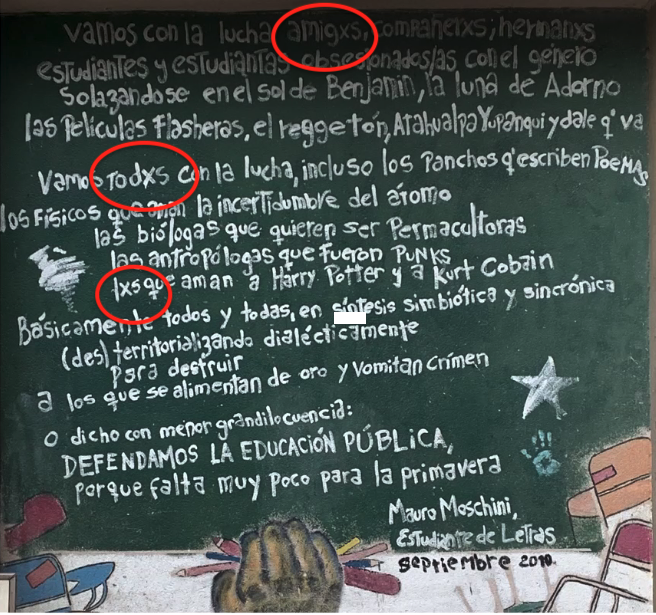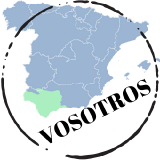1.7: Sección 1 - Pronombres de objeto directo
- Page ID
- 104285
Formas y uso de los pronombres de objeto directo
Note
 |
In this picture, you will note that in several places the artist used an "x" in place of "o" to signify that the masculine ending "-o" should not be the default ending when one is unsure of gender preference. In the United States and some other Spanish-speaking countries, you might see "lxs compañerxs", "l@s compañer@s", or "les compañeres" to signify that the speaker is trying to use non-gendered language. This means replacing "-o" with the letter "x" or the letter "e", although the pattern with "e" is becoming more prevalent because you can pronounce it. You will have noted this already in the vocabulary lists. This ending is only appropriate for people, not with objects that have grammatical gender, e.g., el libro or la mesa, which will then use an adjective that is masculine/feminine and singular/plural. For this text, we are using -x because that is the one preferred by many of our students.
(Photo used with permission by Elizabeth Osborne) |
In a previous section of this chapter, you had the opportunity to review indirect object pronouns. This is a brief review of direct object pronouns. Just as a reminder, direct object pronouns receive the action of the verb. In the examples, the underlined noun is the direct object of the sentence. The examples on the right show the substitution of the pronoun for the noun. The forms of the pronouns are shown in the table below along with information about their position in the sentence.
Ejemplos:
Visito el museo -----> Lo visito
Exploramos la ciudad. -----> La exploramos
Lees las cartas. -----> Las lees
Comen las verduras. -----> Las comen
Veo a la chica -----> La veo
Estoy escribiendo la carta -----> Estoy escribiéndola (o La estoy escribiendo)
Prefieren comprar el poncho. -----> Prefieren comprarlo (o Lo prefieren comprar)
(OJO: "a" before a direct object that refers to a definite person is necessary in Spanish.)
Formas del pronombre directo
| me | nos |
|
te |
|
| lo/la | los/las |
| *For more information on the regional forms "vos" and "vosotros", click the images above | |
Posición del pronombre directo
- Directly in front of the conjugated verb
- Attached to an infinitive or the gerund form
- Quiero visitar el museo. ----->Quiero visitarlo/Lo quiero visitar
- Estoy visitando la ciudad. ------> Estoy visitándola/La estoy visitando
¡Practicar!
Actividad 1
Los turistas comen los platos típicos de Perú.
El arqueólogo descubrió las ruinas en la selva.
Podemos ver los monumentos en la plaza mayor.
El artesano está tejiendo la tela.
Las bailarinas llevan polderas tradicionales.
- Answer
-
Los turistas los comen.
El arqueólogo las descubrió.
Podemos verlos en la plaza mayor/ Los podemos ver en la plaza mayor.
El artesano está tejiéndola/El artesano la está tejiendo.
Las bailarinas las llevan.
Actividad 2
For more practice with Direct Object Pronouns:
Actividad 3
|
|
Marta y Carlos van de compras en el mercado. Hicieron una lista de los comestibles que necesitaban pero a María se le olvidó ponerla en su bolsa. Ahora en el mercado están tratando de recordar todo lo que necesitan. Saben que quieren preparar un plato con pescado esta semana y una lasaña. En parejas van a tomar los papeles de Marta y Carlos. Carlos va a mencionar unos comestibles, y Marta le dice si los necesitan. Usa pronombres de objeto directo en la respuesta y trata de variar los verbos. Verbos posibles: Lista de comestibles: Modelo: Carlos: ¿Escribiste pimienta en la lista? |





